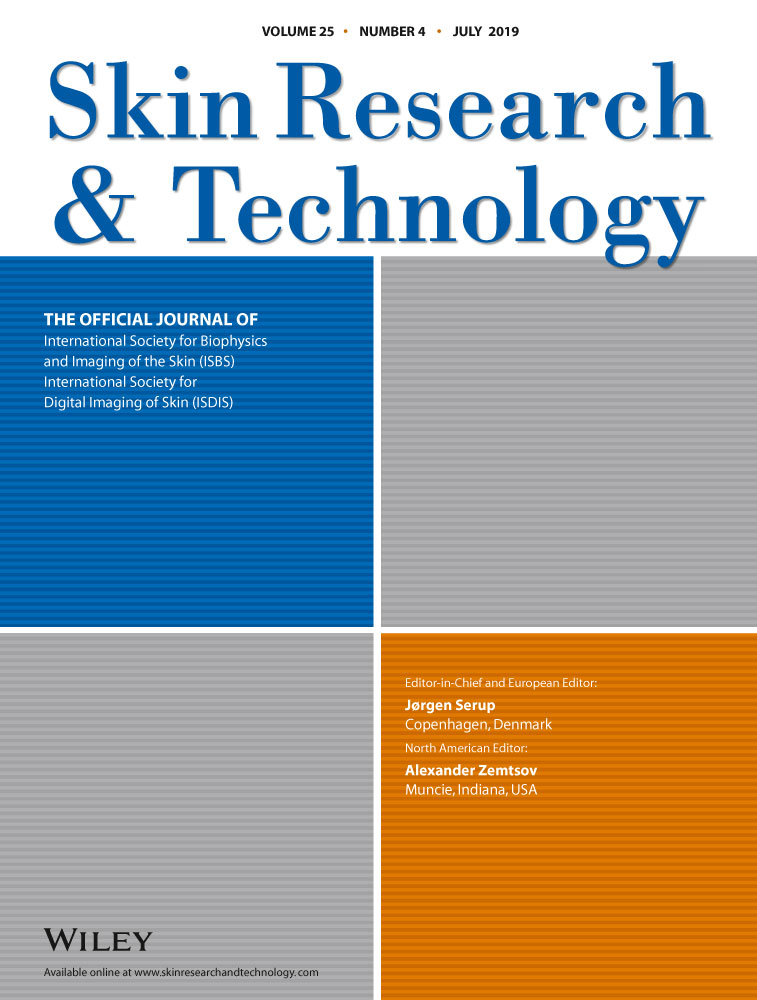Three-dimensional reconstruction of skin disease using multi-view mobile images
Abstract
Background/Purpose
In skin beauty area, interest in diagnosis and management methods for acne is increasing. However, it is difficult to diagnose protruding skin disease by two-dimensional (2D) image. Three-dimensional (3D) approach is needed. The purpose of this study was to propose a system for reconstructing 3D model (visual hull) of 2D images obtained using mobile devices.
Methods
Acne images were acquired using a 3D printing mobile image acquisition system. Using two attached mirrors, five multi-view acne silhouette images were obtained. They were then, reconstructed to 3D. To measure the volume of the formed 3D model (visual hull), post-processing, calculation, and texture mapping were performed. The volume of acne samples designed with 3D printing was compared with the volume calculated in the produced system using statistical analysis program.
Results
The 3D modeling program demonstrated its superiority by showing high correlation (r = 0.783) between the actual volume of acne and the volume calculated by the system. The 3D model (visual hull) was successfully reconstructed by capturing 2D images of actual acne.
Conclusion
In this study, we created a system to reconstruct small sized protruding skin disease images such as acne obtained with mobile devices. The 3D printing system was used to obtain images from mobile camera and reconstructed to 3D. To verify the volume of the reconstructed model, 3D printing samples were produced and compared with the calculated actual volume. It can be used, for initial diagnosis by receiving information about the protruding skin disease without space-time constraints using a mobile device.
CONFLICT OF INTEREST
The authors declare that there are no conflicts of interest.




